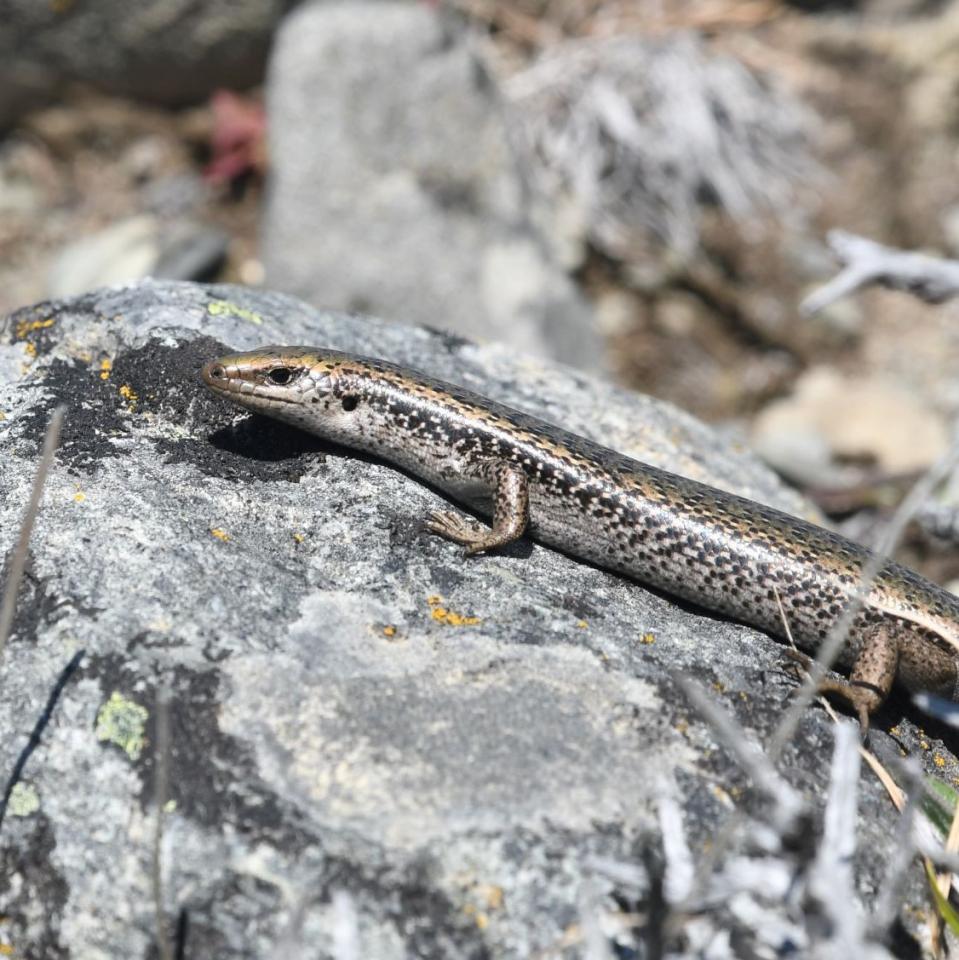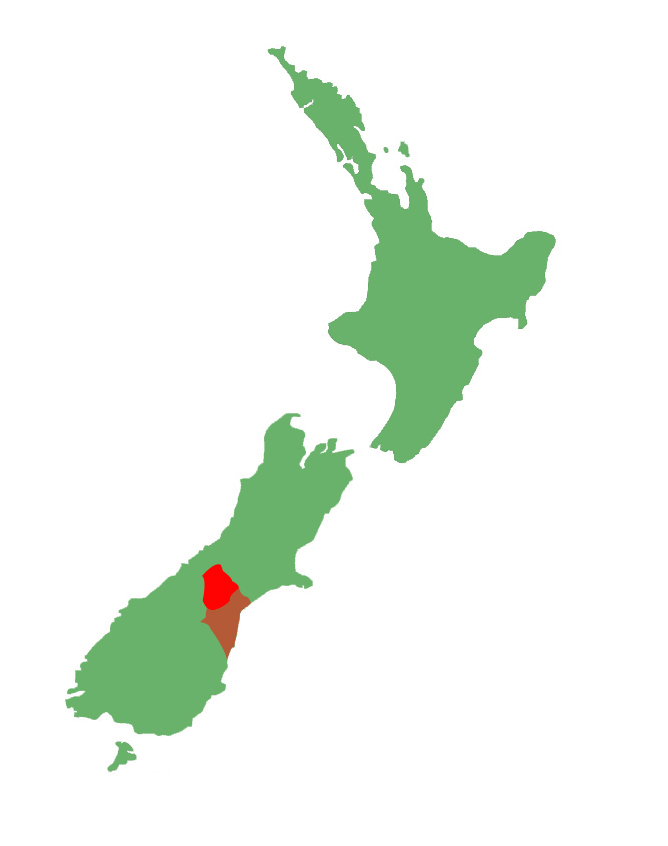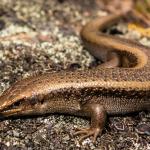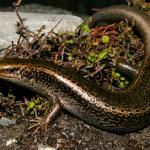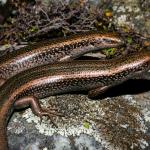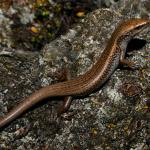- Home
- Herpetofauna Index
- Native
- Oligosoma Prasinum
Oligosoma prasinum
Mackenzie skink
Oligosoma prasinum
(Melzer et al., 2017)
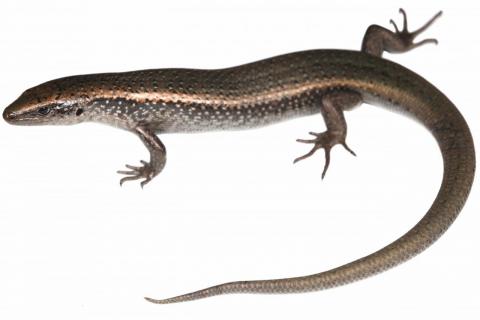
Length: SVL up to 94mm, with the tail being longer than the body length
Weight: unknown
Description
A large, and often beautifully coloured skink from the Mackenzie Basin.
The dorsal colour of Mackenzie skinks are often various shades of grey-green, brown, or olive green, with lighter-coloured dots (ocelli) and dark speckles scattered along the dorsal surfaces, fading out on the tail where they are often absent. Mackenzie skinks often have cream or golden-brown-coloured dorsolateral stripes which break up on the tail, the flanks are often dark with white or cream flecking, with the lower surfaces being a uniform grey, although they are sometimes flushed with pink.
Similar in appearance to other members within the spotted skink complex (Oligosoma lineoocellatum), and the green skink complex (Oligosoma chloronoton), but generally geographically isolated from these species. Can be differentiated from other members of the spotted skink group e.g. northern spotted skink (Oligosoma kokowai), and Canterbury spotted skink (Oligosoma lineoocellatum) by the lack of ocelli (eye-like markings) on the tail.
Life expectancy
Unknown.
Distribution
Mackenzie skinks are restricted to the Mackenzie Basin, occurring from the Rangitata River in the north through to Lake Pukaki at their southern limit. Potentially could occur further south in Canterbury, but future surveys would need to be carried out to confirm this.
Ecology and habitat
Mackenzie skinks are diurnal, terrestrial, and avid-sunbaskers making them a particularly conspicuous species. They prefer open/sunny areas such as open grassy areas, tussock grassland, rock piles, and scree slopes. When not basking or foraging, Mackenzie skinks will take refuge under rocks, logs, or in dense vegetation such as thick grass and complex shrubs.
Social structure
Largely unknown.
Breeding biology
Viviparous (Live bearing). Largely unknown, but likely to be similar to that of the Canterbury spotted skink (Oligosoma lineoocellatum) e.g. females giving birth to 1-3 young between February and March.
Diet
In common with other species of New Zealand skink, the diet of Mackenzie skinks includes a wide range of invertebrates, and the berries / fruit and nectar of native plant species.
Disease
Mackenzie skinks have been recorded with species of ectoparasitic mites.
Conservation strategy
Mackenzie skinks are regarded as 'Threatened - Nationally Vulnerable' and are becoming increasingly rare due to the ongoing effects of habitat modification and predation by mammalian predators (rodents, mustelids, hedgehogs, and cats). This species is not currently being managed.
Interesting notes
Mackenzie skinks are members of the spotted skink species complex. 'Spotted skinks' are a group of four closely-related species which are difficult to distinguish morphologically (based on appearance) and were originally regarded as one variable and widely distributed species - Oligosoma lineoocellatum (of which the Canterbury spotted skink has retained this scientific name). Spotted skinks are regionally distributed from the southern North Island to the central South Island. Other species include the northern spotted skink (Oligosoma kokowai), Canterbury spotted skink (Oligosoma lineoocellatum), and Marlborough spotted skink (Oligosoma elium).
References
Hitchmough, R.A., Barr, B., Lettink, M., Monks, J., Reardon, J., Tocher, M., van Winkel, D., Rolfe, J. (2016). Conservation status of New Zealand reptiles, 2015; New Zealand threat classification series 17. Wellington: New Zealand Department of Conservation.
Jewell, T. (2011). A photographic guide to reptiles and amphibians of New Zealand. Auckland: New Holland Publishing.
van Winkel, D., Baling, M. & Hitchmough, R. (2018). Reptiles and Amphibians of New Zealand: A Field Guide. Auckland: Auckland University Press, 376 pp.

